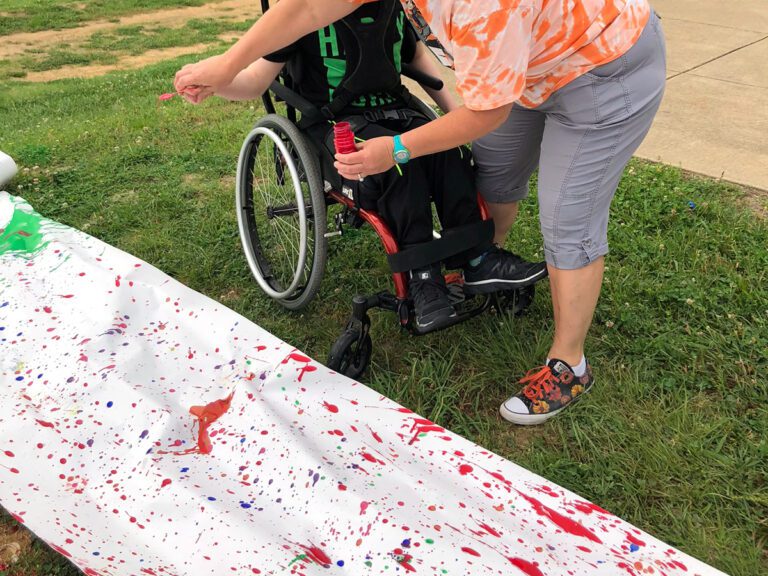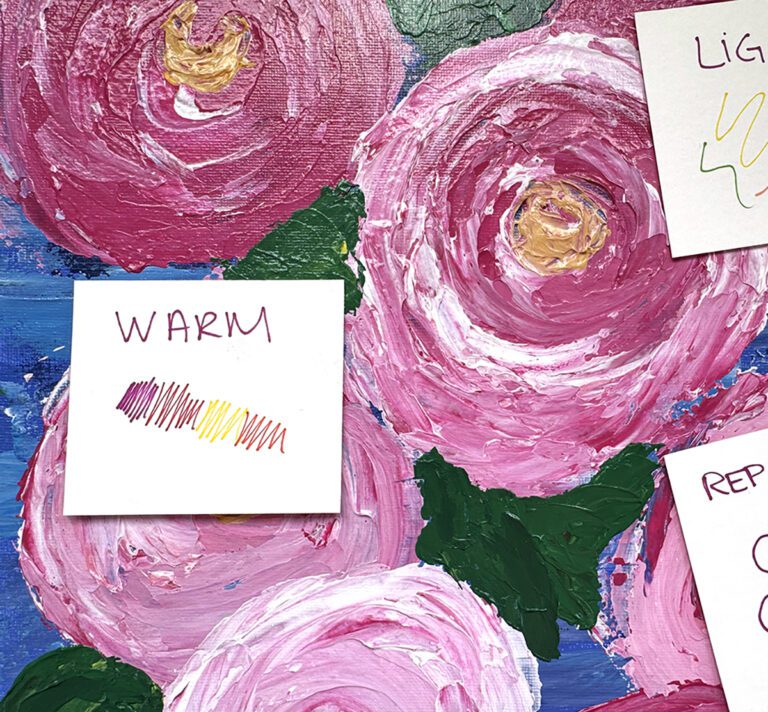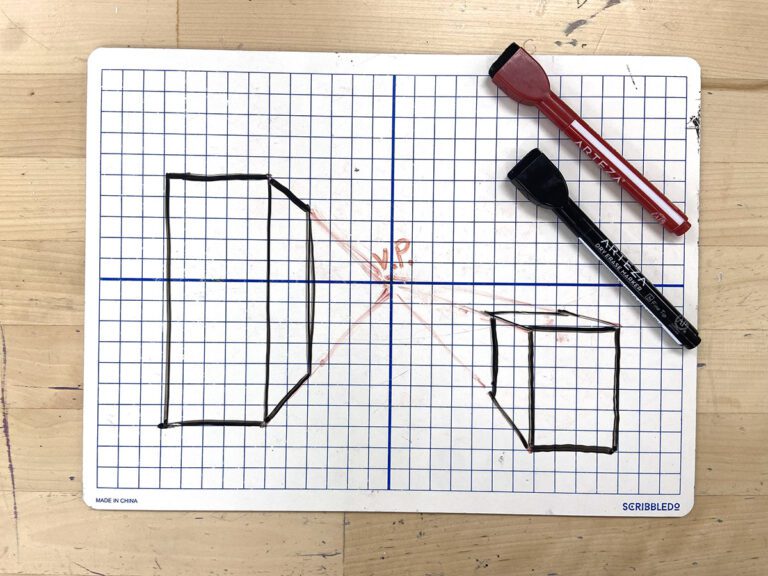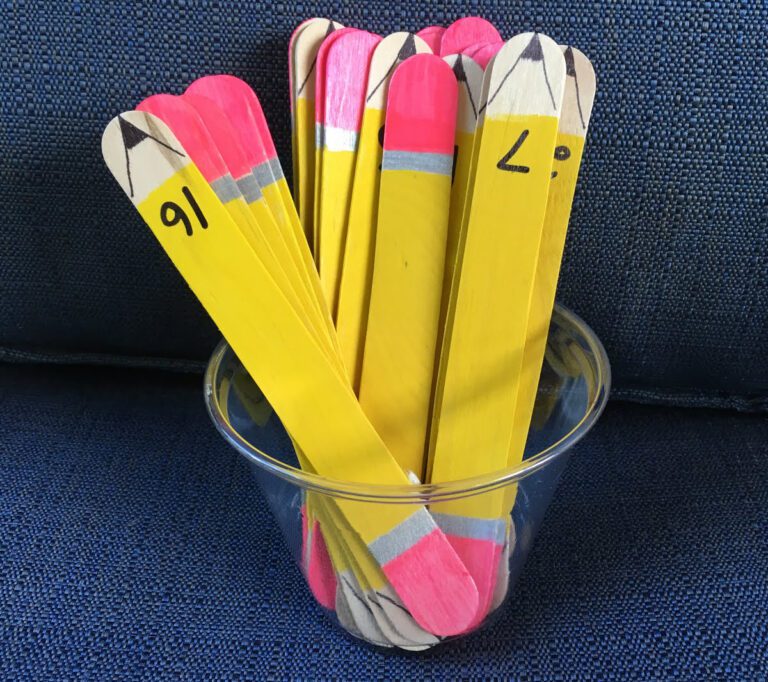It all started last spring as I was hanging the annual elementary art show. I was tacking up an adorable crop of self-portraits when a colleague stopped to ask about a particular piece. “Wow, that is SO realistic…who is that student?” Inwardly, I winced because “that student” didn’t make most of the piece; he could barely grip a writing tool. His teaching aide created most of the artwork, and not in a collaborative “Dale Chihuly”- type of way. I had no one to blame but myself.
I was failing my special education students by not finding a clear way to communicate my expectations to their one-on-one aides.
The aides had started to touch the student artwork a little too much for my comfort. It began slowly, but it was a slippery slope. Pretty soon it was very awkward, and I didn’t know how to change things. There was a significant disconnect between my process-based philosophy as an art teacher and what was happening with my special education students’ art.
If you’re finding yourself in the same situation, don’t worry! Today I’m sharing how you can get your classroom back on track and provide your students with the art room experience they deserve.
Here are three ways to help teaching aides effectively work with your students.
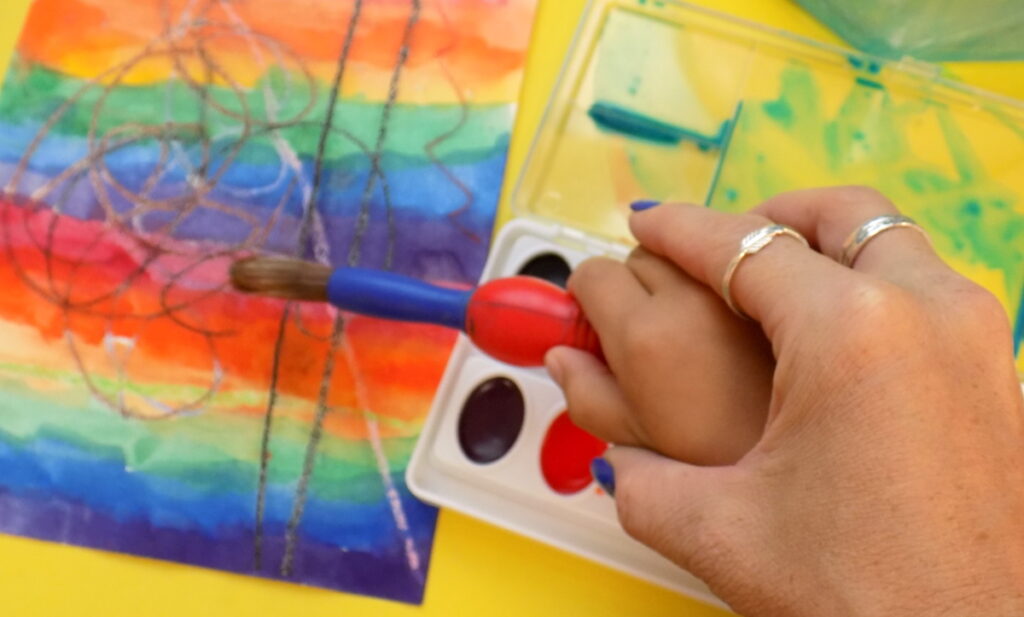
1. Encourage Your Aides to Develop Their Personal Artistic Practice
We know this fundamental truth: adults NEED art. But, sadly, most people do not have any type of creative outlet in their daily lives. So, when you set a bunch of colorful, titillating art supplies in front of the average adult, it takes some mega restraint not to create a turtle drawing that beats the pants off of the rest of the third graders at that table.
Well, why not let them? Make art, I mean, not intimidate third graders. There is educational value in watching someone’s artistic process. Kids learn something when they watch others design, struggle with technique, and finally, execute an idea. As long as teaching aides understand their first responsibility is to their student, encourage them to work side-by-side, modeling artistic behavior.
Here are some ideas to try.
- Provide adult coloring books. (If you feel comfortable. I realize this is a love/hate topic.)
- Ask them to develop project or technique samples for the next class.
- Let them do their own version of the project to “live” model a particular technique.
- Ask them to participate in the faculty art show.
- Ask them to be a classroom photographer to help document student art. These photos could then be used for presentations, a classroom blog, website, or other social media site, or Artsonia.
2. Acknowledge Their Expertise, And Build On It
The vast majority of teaching aides I know do not have a degree in the art education field. However, they are often light years ahead of me in specific special education knowledge because of the sheer number of hours spent with individual students. Tapping into this knowledge can only improve the art experience for my students.
Sometimes it can be intimidating for an aide to approach an art teacher with a suggestion about their instructional practice. So how do art teachers create a climate where teaching aides feel valued and want to share? The key to being approachable is acknowledging their expertise and specifically asking them to intervene with their best judgment when appropriate. Be clear, and let them know that you want feedback and ideas during class.
This year, my music teacher and I set the tone by creating a “Fine Arts Teaching Aide Handbook.” We included our philosophies, ideas about best practices in fine arts classes, and a FAQ section. We “crashed” the back-to-school in-service for teaching aides, and shared the document as we got to know our new aids.

Empower Aides to Help Pivot Instruction
One of my personal pet peeves is when people use the word “flexible” to describe educators or instruction. “Flexible” does not accurately describe what happens in my classroom. I’d like to propose “pivot” as an alternative, which means: “to rapidly change instructional direction, on the fly, as though the art room or your pants were on fire.” But, I digress.
When elementary classes contain almost 30 students, you have to pivot constantly. But, I cannot always reach every kid for an individual conference during each class. This can be especially problematic for my students with the most challenges. As a resident expert on their individual students, aides can get their kids engaged immediately if I provide them with the right resources to make changes when necessary.
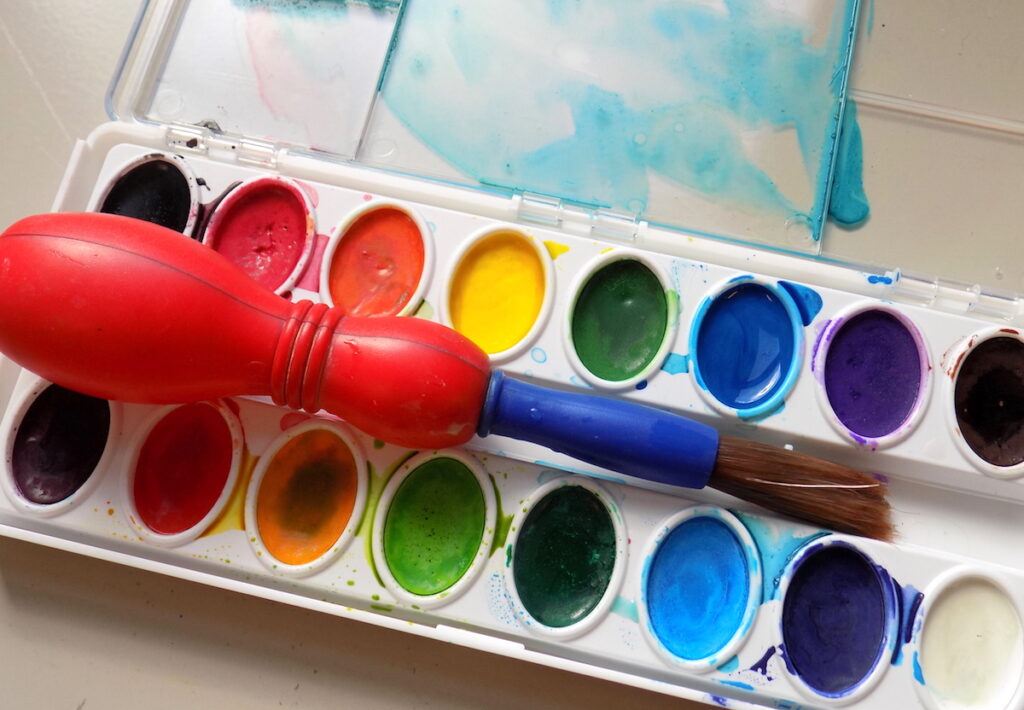
Here are a few ways you could support their efforts.
- Provide a single location for easily-accessible adaptive supplies.
- Post a list of potential environmental accommodations. This could include things like using headphones, moving to a less bright space, adjusting the table height, sitting by a preferred peer, or anything else that may make the student more comfortable.
- Allow subject or topic pivots if necessary. However, remember to emphasize the students should be the ones to choose something related to their own interests.
While things still aren’t perfect, I’m really pleased with the progress we’ve made in a short amount of time. I can definitely tell my students are too!
How do teaching aides function in your classroom?
What strategies do you use to communicate your philosophy to other adults who may work in your classroom?
Magazine articles and podcasts are opinions of professional education contributors and do not necessarily represent the position of the Art of Education University (AOEU) or its academic offerings. Contributors use terms in the way they are most often talked about in the scope of their educational experiences.


